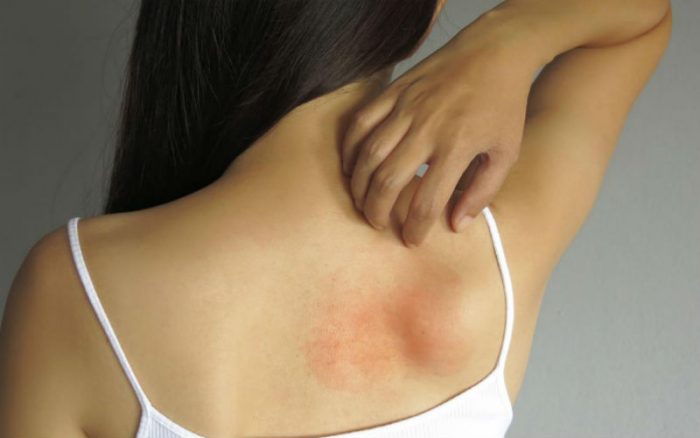
What’s My Rash?
Unless you’re a medical professional, you may have a hard time determining whether your strange rash is a health concern or nothing to worry about. Rashes can be all manner of things – from bites and allergies to skin sensitivities and fungal infections, so it’s essential not to jump to conclusions.
The following information can help you to narrow down potential rash causes, but it’s by no means an extensive list. The best way to diagnose a rash or skin irritation is by making an appointment with your GP.
Flea Bites
Flea bites are usually quite easy to spot, because they look less like a rash, and more like a cluster of spots. In many cases, they frequently appear around your feet and lower legs, and they have a round halo around a red bump that’s quite itchy.
Unlike other health issues and rash types, flea bites become itchy almost immediately after they happen. They are also present on the legs and feet because of where the fleas typically live or feed. Often, flea bites go away without treatment, but antihistamines and anti-itch creams may prove useful. You must also address the cause of the fleas to prevent more bites in the future.
Contact Dermatitis
Contact dermatitis is an unpleasant and itchy reaction that your skin can have to certain chemicals or products. It appears within hours or days of that initial contact and forms as red, raw, itchy, or scaly skin that can ooze, weep, and crust over. It can be painful, uncomfortable, and irritating all in one.
Alleviating contact dermatitis can be a process of identifying the problem product to prevent the reaction in the first place, and by using mild and skin-sensitive products.
Rosacea
Rosacea is a chronic skin condition that appears as a red rash typically on your face. It can go through cycles where it disappears and reappears and can flare up or go away as quickly as it arrived. Rosacea has many different symptoms due to how many subtypes there are, and it often presents as raised, red bumps, dryness and skin sensitivity, facial blushing and general redness.
Many people tell their health professional that when they get a rosacea flareup, it’s caused by stress, too much sunlight, spicy food, or alcohol. This condition has no cure, but you can avoid products that make it flare up and use skin sensitive products.
Ringworm
Ringworm is a fungal infection that appears on your skin in a ring with a scaly, raised, and circular rash that’s itchy and uncomfortable. The outer edges of the ring can spread outward, and some patches develop blisters or pustules. Your doctor can prescribe several medications for treating ringworm, including gels, anti-fungal cream, and ointment.
If you find yourself with a rash or skin condition that doesn’t seem to go away, then see a medical professional without delay. They can help get to the cause of the problem before offering advice and treatment methods to help you in the future. Every rash is different, so never look to Dr. Google for your answers.
